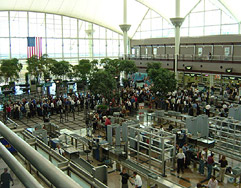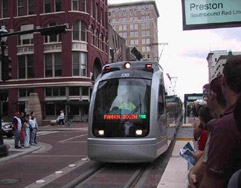BROOKINGS INSTITUTION
BUDGETING FOR NATIONAL PRIORITIES PROJECT
Written by William A. Galston and Robert J. Puentes
Introduction: Why Infrastructure Matters
Since the beginning of our Republic, infrastructure—starting with transportation and water management—has played a central role in advancing the American economy. From the railroads that linked the heartland to industrial centers to the interstate highway system that forged regional connections, a sharp focus on prioritized, strategic, and rational infrastructure investments underscored periods of regional growth and national prosperity. But what the United States once understood, we seem to have forgotten. During the past three decades the United States has significantly underinvested in infrastructure. This shortfall has made it difficult to maintain existing infrastructure assets and impossible to create a globally competitive system. Our failure to meet long-term infrastructure requirements has impaired economic efficiency, impeded the creation of stable middle-class jobs, and slowed our response to the threat of climate change. It also is imposing direct costs on individuals and businesses. Several studies have documented sharply higher costs for vehicle maintenance and have attributed much of that increase to poor road conditions.
Our nation’s infrastructure is in desperate need of upgrading and modernization. From highly publicized bridge collapses and levee breaches to airport delays and traffic congestion, every American has experienced the frustration—and in some cases the dangers—of aging, overcrowded, under-maintained facilities.
Closing the infrastructure investment gap would have at least four beneficial consequences. First, it would boost the creation of jobs that often provide middle-class wages and opportunities to workers with modest levels of formal education. Second, it would enhance economic growth by decreasing overhead cost to business while efficiently moving people, goods, and ideas. Third, it would better connect households across metropolitan areas to higher quality opportunities for employment, health care, and education. Fourth, it could reduce greenhouse gas emissions while helping to protect the nation from an increasingly unpredictable natural environment. For these reasons, among others, presidential candidates would be well advised to address infrastructure issues.
The Problem
“In a growing economy,” a Congressional Research Service paper notes, “infrastructure should hold its own, but other data show that that has not been the case. While total government spending on infrastructure adjusted for inflation increased from $92 billion in 1960 to $161 billion in 2007, it actually declined from $1.17 per capita in 1960 to $0.85 per capita in 2007.”iAccording to one expert, “from 1950 to 1970 we devoted 3 percent of GDP to spending on infrastructure….[s]ince 1980 we have been spending well less than 2 percent, resulting in a huge accumulated shortfall of needed investment.”ii Just since 2002, CBO estimates, inflation-adjusted spending for highways at all levels of the federal system has fallen by 19 percent.
The problem runs from top to bottom. Political wrangling and dysfunction mean that the federal government has ceased to be a reliable partner and effective leader. Furthermore, the rise in federal interest payments, the increase in entitlement spending, and the decline in traditional sources of government revenue, such as the gasoline tax, mean that competition for limited resources is fierce.
By contrast, some cities and states now see budget surpluses due in part to increases in property tax revenues and state level sales tax collections. However, it will take years for most localities to build back their reserves, repay debt incurred during the Great Recession of 2007- 2009, and pay for deferred maintenance on a range of infrastructure assets. Cities and states typically rely on the bond market to finance long-term projects, yet even though interest rates remain at historically low levels, the ability of many governments to borrow from the capital markets is hindered by debt caps and weak credit ratings. Plus, because virtually all state and local governments have balanced budget requirements, they must establish their ability to repay before borrowing. In addition to managing the lingering effects of the Great Recession, many states and localities must confront a limited fiscal capacity, as they are squeezed between soaring costs for health care and for criminal justice but slowly growing revenue sources.iv Combined, these circumstances constrain their ability to self-finance projects, leading officials to scale back, delay, or cancel projects altogether.
This shortfall renders the United States less competitive in the global market. The World Economic Forum’s 2014-2015 Global Competitiveness Report ranks the overall quality of U.S. infrastructure twelfth in the world, down from seventh place just eight years ago. We rank poorly in every category, with especially low marks for the quality of our roads, ports, railroads, and— most precipitously—air transport infrastructure and electricity supply.v As the Urban Land Institute succinctly put it: “to be competitive in today’s world, it is imperative to invest in infrastructure.”
Download full version (PDF): What the Presidential Candidates Need to Know about Infrastructure
About the Brookings Institution Budgeting For National Priorities Project
www.brookings.edu/about/projects/budget
The Budgeting for National Priorities project promotes greater fiscal responsibility by developing new ideas, educating the public and finding common ground among experts and policy-makers.
Tags: Brookings Institution, Budgeting For National Priorities Project, Election, Robert J. Puentes, William A. Galston






 RSS Feed
RSS Feed